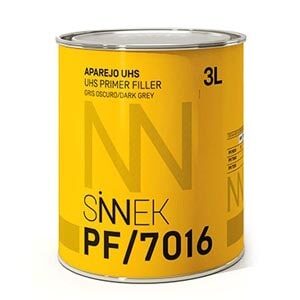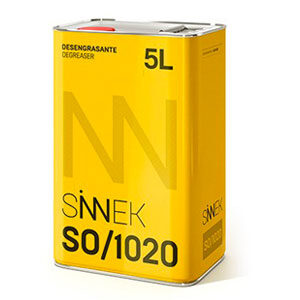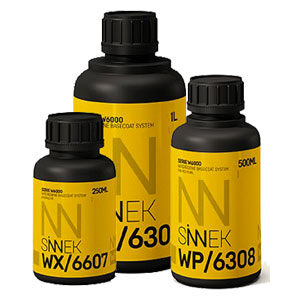
Repairing and painting the wheels of a vehicle is a common work process in the bodyshop, as it is one of the most visible and exposed elements of the bodywork. Contaminants, gravel, a larger wheel size, and reduction of the tire profile by the manufacturers increase the chances of damage and flaws to these parts.
An increase in wheel repairs in the bodyshop is due in part to the growing trend of customers who want to give their vehicles a more attractive and exclusive appearance. However, we must not forget that the painting of car wheels provides the surface with additional protection against rust or other types of contaminants.
As is the case with other types of repairs, such as bumper painting or other bodywork it is essential for professional painters to have an in-depth knowledge of all the steps to be taken to obtain a quality repair and painting of wheels.
Distinctive features of wheel painting
On the one hand, we must pay special attention to the prior process of preparing the wheel, conducting a thorough cleaning of the wheel and making sure to remove any remaining dust, grease or dirt. To do so, we will use products that are specially designed to clean wheels and are more efficient in this type of substrate.
On the other hand, for a good anchorage of the paint and a good final result, it is important that the sanding is conducted almost entirely by hand.
The large number of angles, hollows and geometries of these types of parts makes it necessary to use sanding blocks or sanding sponges to sand the areas that are inaccessible to a rotational-orbital sanding machine.
The most common damages to repair are:
- Small material losses, mainly in the wheel profile.
- Scrapes, marks and scratches of varying depth.
- Discolouration and loss of gloss of the surface, due to atmospheric and environmental conditions.
How to paint wheels: Spray or Air spray gun?
When it comes to painting the wheels, depending on the needs and type of repair, we can choose between a painting the wheels with a spray or with an air spray gun.
This choice will be made based on factors such as the type, location and severity of the damage, work time, etc.
Spray painting of the wheels
In partial repairs with small damages, it may be better to use a spray to paint the wheels that also provides a good final finish.
With the spray you will reduce the work time since it will not be necessary to prepare the colour mixture or to clean the application tools. On the other hand, we will be more limited in the choice of colours to use.

SINNEK’s SP/9240 ALUMINIUM WHEELS is a spray that is specially designed to paint wheels in aluminium colour, which is the most common type of shade used in this type of parts. This product provides the professional a simple application, high hiding power and fast drying.
Painting wheels with an air spray gun
We will choose to paint the wheels with an air spray gun when the damages are larger and we wantto give the part a better finish and resistance than that obtained with the paint spray for wheels.
Another great advantages of using an air spray gun is that of total freedom when formulating the colour that best suits the shade of the wheel to be repaired, or using any other colour that is integrated into the painting system.
Influence of the manufacturing material on wheel painting
At present, the bodyshop professional may face two types of wheels that will condition the work process to use: steel wheels and aluminium wheels.

Steel wheels still have a large presence in the car fleet today. Its steel composition provides robustness and resistance to the part, and they may sometimes be covered by plastic hubcaps.
Painting steel wheels involves a treatment and repair process that is quite similar to that of other sheet metal parts of the vehicle. Therefore, in this tutorial we will focus on the painting of aluminium wheels, which is a more specific type of repair.
Aluminium wheels are increasingly used by both users and manufacturers. However, their cost is also higher than that of steel wheels, so repairing them is usually chosen over replacing the part.
Aluminium wheels, not being as strong as those made of steel, can suffer further wear and tear over time, resulting in loss of gloss or colour, scratches, etc.
Steps to follow for efficient painting of aluminium wheels
To achieve high productivity in the painting of aluminium wheels in the bodyshop, it will be advisable to follow a series of steps that will ensure an efficient work methodology and an excellent final finish of the part.
- Debeading of the wheel
Removing the tyre from the wheel will allow us to work more comfortably and efficiently. Once it has been debeaded, place it on a surface at medium height, to prevent adopting a forced working posture.
- Thoroughly clean the entire surface
As mentioned above, it is essential to conduct a thorough cleaning of the entire wheel, using specific products. This way you will remove all the remains of grease, dirt or other contaminants, which will favour a good adhesion and anchorage of the paint. Then dry the part with a clean cloth.
- Damage assessment
Now that the wheel is clean and has been prepared, we inspect all the flaws in detail. If we find defects that affect the structure of the wheel, such as cracks or deformations, we will have to assess whether the bodyshop has the appropriate tools to repair them.
- Masking and sanding
Mask the tyre and the parts of the wheel that are not going to be painted, but that need to be protected from the sanding process or potential spraying.
Then sand the part, using a P150 or P180 grit sanding grain for the smoother areas where we can use a rotary orbital machine. For hard-to-reach surfaces, sand manually with a block. With this we seek to disguise as much as possible the scratches, scuffs and irregularities of the wheel. Finally, we clean the dust generated by sanding. - Applying aluminium putty
In the areas where we have observed deep scratches or material losses, we will apply a body filler with aluminium agents that provides excellent hardness and resistance and a high filling power. In this case we will use aluminium putty PP/9507.
Next, we sand the applied putty with a p150 – P320 grit depending on the type of repair to be carried out, to level and smoothen the surface correctly. We clean the generated dirt in depth. - Application of filler:
We choose a greyscale primer colour that optimises the hiding power of the paint and the matching of the chosen finish colour. To do this, we verify the shade indicated in the colour management software.
We apply the filler based on the specifications of its data sheet.
Once the filler coat has dried, we sand it, using a rotary eccentric machine for the flat and smooth areas with P400 or P500 sandpaper and orbit 3. In difficult access areas we will use a sanding sponge or block. Then, we will degrease the part again. - Applying the finishing paint
If we know the colour code of the wheel, we will formulate the mixture based on the specifications of the colour software.
If we do not know the code, we will use the spectrophotometer to know the colour formula or the variant that best matches the shade of the wheel.
We will then prepare the colourand apply it to the wheel following the guidelines laid out in the technical data sheet. Finally, we will prepare and spray a clearcoat that provides excellent gloss, extendibility and resistance.







